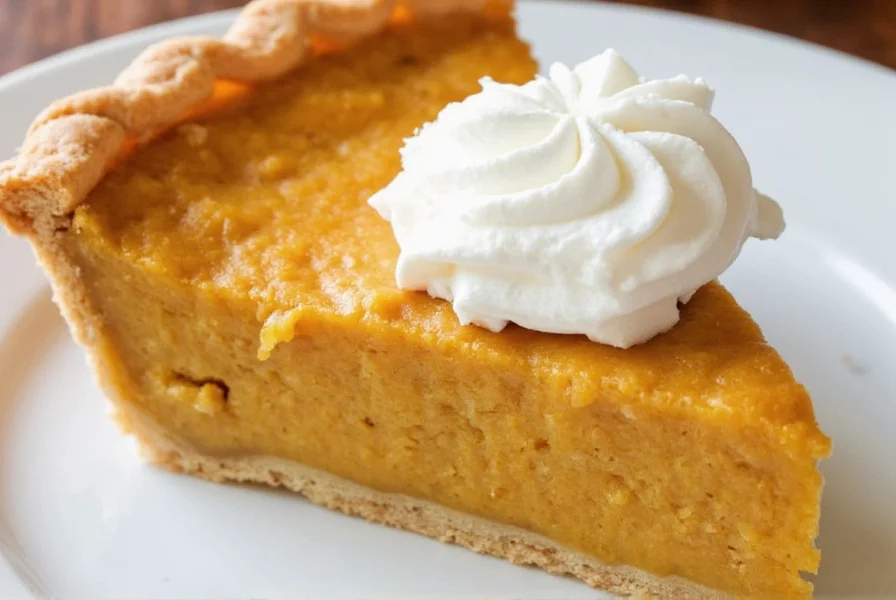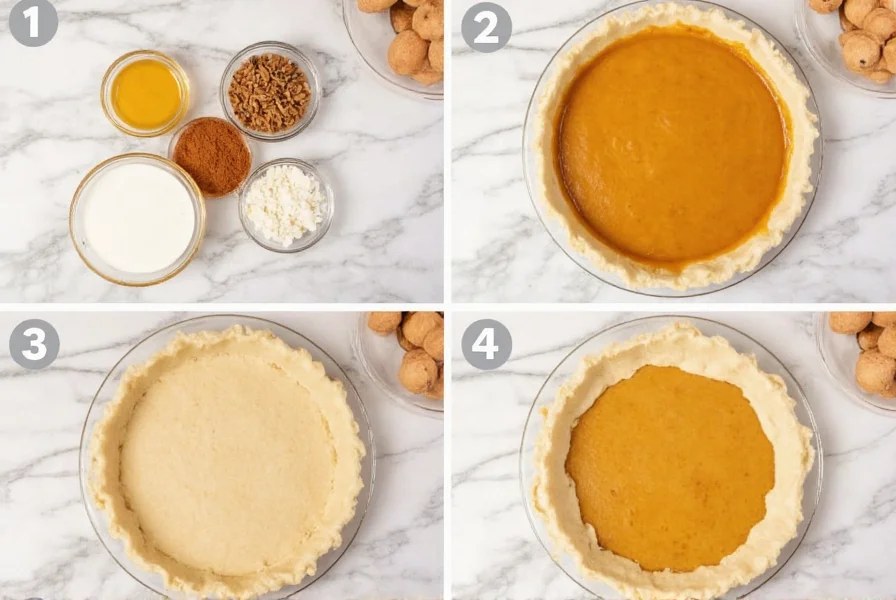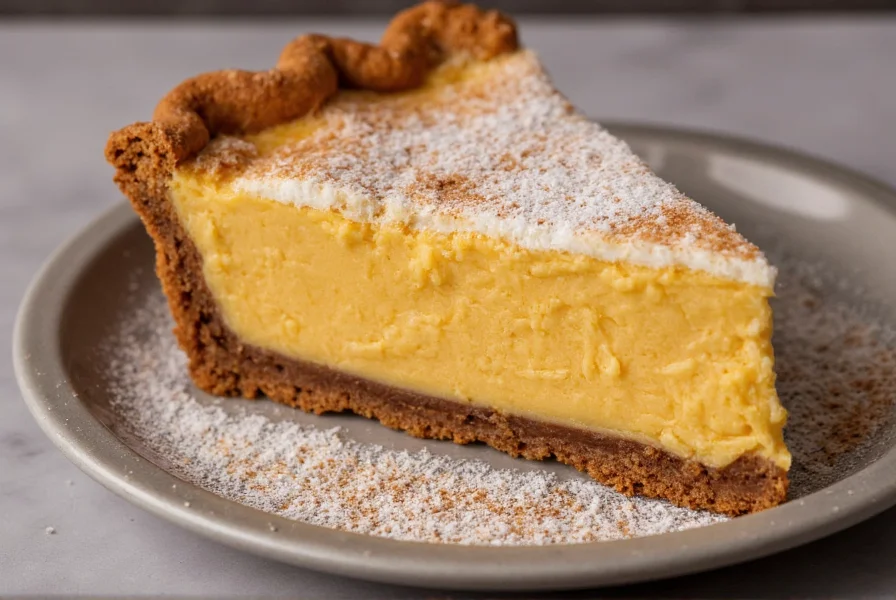Butterscotch and cinnamon pie represents a sophisticated evolution of traditional butterscotch pie, adding depth and complexity through the strategic incorporation of cinnamon. While classic butterscotch pie has enjoyed popularity since the early 20th century, the addition of cinnamon creates a more nuanced flavor profile that appeals to modern palates seeking both comfort and sophistication in dessert.
Understanding the chemistry behind this pairing explains its success: butterscotch's rich, buttery caramel notes complement cinnamon's warm, slightly spicy character. The Maillard reaction during butterscotch preparation creates complex flavor compounds that interact beautifully with cinnamaldehyde, cinnamon's primary flavor component. This scientific harmony results in a dessert greater than the sum of its parts.
The History of Butterscotch Pie
Butterscotch originated in England during the 19th century, with "scotch" referring to the process of "scotching" or cutting the candy while cooling. American bakers adapted the concept into pie form by the early 1900s, with recipes appearing in community cookbooks by the 1920s. The addition of cinnamon represents a more recent innovation, likely emerging in the late 20th century as home bakers experimented with flavor variations.
Flavor Profile Analysis
What makes butterscotch and cinnamon work so well together? Butterscotch provides:
| Flavor Component | Butterscotch Contribution | Cinnamon Enhancement |
|---|---|---|
| Sweetness | Rich brown sugar caramelization | Warmth that balances sweetness |
| Texture | Silky, custard-like smoothness | Subtle complexity without graininess |
| Aroma | Buttery, caramel notes | Spicy warmth that elevates overall fragrance |
| Aftertaste | Mildly sweet finish | Pleasant lingering warmth |
Essential Ingredients Breakdown
The magic of homemade butterscotch cinnamon pie recipe lies in ingredient quality and precise ratios. Don't substitute margarine for butter or artificial flavorings—these compromise the delicate flavor balance.
Brown sugar: Use dark brown sugar for maximum molasses content, which creates deeper butterscotch flavor. The 4:1 ratio of brown sugar to flour is critical for proper thickening without graininess.
Butter: Unsalted European-style butter (higher fat content) produces the richest flavor. Melt it slowly to avoid separation.
Cream: Heavy cream (36-40% fat) provides the ideal fat content for smooth texture. Avoid ultra-pasteurized varieties which can curdle.
Cinnamon: Ceylon cinnamon offers the perfect balance—more floral and less harsh than Cassia. Use 1/2 teaspoon per pie for subtle enhancement without overpowering.
Step-by-Step Preparation Guide
Follow these precise steps for the best butterscotch and cinnamon pie instructions:
- Prepare crust: Blind bake a 9-inch pie crust at 375°F (190°C) for 15 minutes with weights, then 5-7 minutes more until golden
- Create butterscotch base: Melt 1 cup (225g) butter with 2 cups dark brown sugar over medium heat, stirring constantly for 5 minutes until smooth
- Incorporate eggs: Whisk in 3 large eggs one at a time, ensuring each is fully incorporated before adding the next
- Add dairy: Slowly pour in 1 1/2 cups heavy cream while whisking constantly
- Season: Stir in 1/2 teaspoon Ceylon cinnamon, 1/4 teaspoon salt, and 1 teaspoon vanilla extract
- Bake: Pour into prebaked crust and bake at 350°F (175°C) for 35-40 minutes until center jiggles slightly
- Cool: Allow to cool completely at room temperature (3-4 hours) before serving
Avoiding Common Preparation Mistakes
Even experienced bakers encounter issues with butterscotch cinnamon pie filling recipe. Here's how to prevent the most frequent problems:
- Cracked surface: Results from overbaking or rapid temperature changes. Bake until center still has slight jiggle, then cool gradually.
- Grainy texture: Caused by undissolved sugar or improper thickening. Ensure brown sugar fully dissolves in butter before adding other ingredients.
- Watery filling: Insufficient baking time or inaccurate ingredient ratios. Use a kitchen scale for precise measurements.
- Overpowering cinnamon: Using too much or the wrong type. Stick to 1/2 teaspoon Ceylon cinnamon per standard pie.
- Soggy bottom crust: Inadequate blind baking. Ensure crust is fully prebaked and golden before adding filling.
Serving and Presentation Tips
Elevate your perfect butterscotch cinnamon pie texture with these professional presentation techniques:
- Serve at room temperature or slightly warmed (never cold), which allows flavors to express fully
- Top with freshly whipped cream (never canned) lightly sweetened with brown sugar
- Add a delicate cinnamon stick garnish for visual appeal without additional spice
- Pair with bourbon-spiked whipped cream for adult gatherings
- Serve in clear glass pie plates to showcase the beautiful amber color

Storage and Make-Ahead Guidance
Butterscotch and cinnamon pie maintains quality remarkably well when stored properly:
- Refrigerate covered with plastic wrap touching the surface for up to 4 days
- Freeze whole slices wrapped in plastic and foil for up to 2 months (thaw in refrigerator)
- Prepare components separately: crust up to 3 days ahead, filling up to 24 hours ahead
- For optimal texture, avoid freezing the complete assembled pie
- Revive day-old pie by warming individual slices for 30 seconds in microwave
Frequently Asked Questions
Can I use maple syrup instead of brown sugar in butterscotch cinnamon pie?
While maple syrup creates a different flavor profile, it doesn't produce authentic butterscotch. True butterscotch requires the specific chemical reaction between brown sugar (with its molasses content) and butter. Substituting maple syrup results in a maple-cinnamon pie, not butterscotch. For traditional butterscotch flavor, maintain the brown sugar base.
Why does my butterscotch cinnamon pie filling become grainy?
Graininess typically occurs when sugar doesn't fully dissolve during preparation. Ensure you melt the butter and brown sugar together over medium heat, stirring constantly for at least 5 minutes until completely smooth before adding other ingredients. Using a kitchen thermometer to maintain 300-320°F (149-160°C) helps achieve proper dissolution without burning.
How can I prevent my butterscotch pie from cracking on top?
Crafting the perfect butterscotch cinnamon pie texture requires careful baking control. Remove the pie from the oven when the center still has a slight jiggle (like gelatin), as residual heat will continue cooking it. Avoid opening the oven door during baking, and allow the pie to cool gradually at room temperature rather than moving it directly to a cold environment. Using room temperature ingredients initially also helps prevent temperature shock.
Can I make butterscotch cinnamon pie gluten-free?
Yes, you can successfully create a gluten-free version of this traditional butterscotch pie with cinnamon twist. Substitute the all-purpose flour with a 1:1 gluten-free baking blend, and use a gluten-free pie crust. Ensure your cornstarch (if using as thickener) is certified gluten-free. The flavor profile remains excellent, though the texture may be slightly less firm—chilling for an additional hour helps set the filling properly.












 浙公网安备
33010002000092号
浙公网安备
33010002000092号 浙B2-20120091-4
浙B2-20120091-4